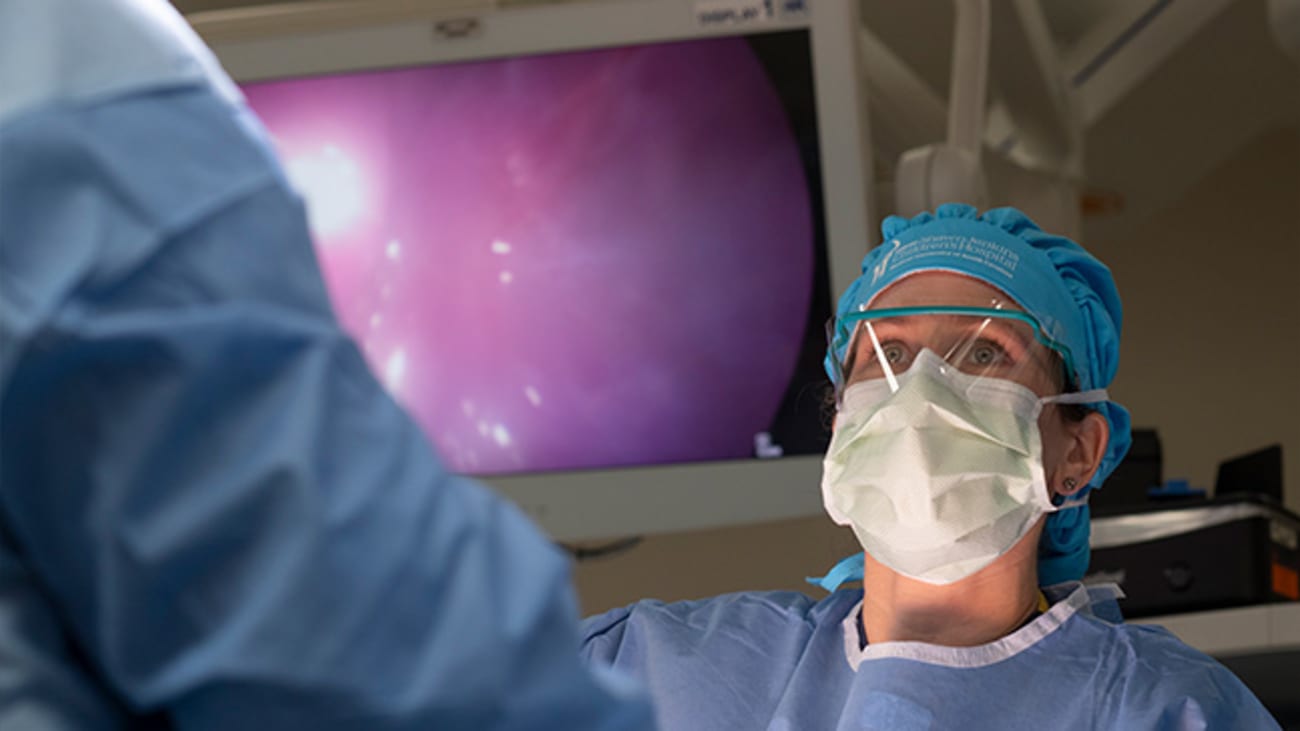
by Kat Hendrix
They never thought they’d see the day that a child could be discharged only 48 hours after chest wall reconstruction surgery.
“We do about 30 Nuss procedures for pectus excavatum annually. And even though we use minimally invasive techniques, it’s still a big surgery. In pectus excavatum, the front of the chest wall is caved in and we reconstruct it by placing a stainless steel bar inside the chest,” explains Laura Hollinger, M.D., a pediatric surgeon at MUSC Shawn Jenkins Children’s Hospital and MUSC Children’s Health.
“It’s one of the most painful procedures we do,” says Robert Cina, M.D., a pediatric surgeon at MUSC Children’s Health. “Even with our very thoughtful, multidisciplinary strategy for pain management, patients are typically in the hospital for five to seven days afterward because of the discomfort associated with correcting this deformity.”
But a revolutionary new surgical technique is now changing that. In spring 2021, MUSC surgeons collaborated with their colleagues in anesthesiology to begin using a groundbreaking cryoablation technique to freeze select thoracic nerves during the surgery — numbing the operative area for up to three months during recovery.
 Surgeons at MUSC can use a cryotechnology unit attached to a probe to freeze select thoracic nerves during surgery.
Surgeons at MUSC can use a cryotechnology unit attached to a probe to freeze select thoracic nerves during surgery.
“We visualize the nerves that exit at each rib and use a probe to freeze five of those neurovascular bundles on each side,” says Cina. “The temperature is low enough to kill the inner nerve — which is more sensitive — but the sheath that supports it stays alive, so the nerves grow back over the next several months and repopulate that sheath.”
In addition to reducing postoperative pain, cryoablation eliminates the need for an epidural, which often causes urinary retention and leads to the need for a Foley catheter in the first several days after surgery.
“Right off the bat, we saw a big improvement, with less pain and patients getting out of the hospital quicker,” says Hollinger. “Because they don’t get an epidural or a Foley, they usually don’t have to stay in the ICU. And the cost savings are substantial for both the hospital and the patients. It’s a win-win scenario.”
Christian Streck, M.D., the division chief for pediatric surgery at MUSC, was instrumental in acquiring this cutting-edge capability. “We participated in a large study that compared how much postoperative pain medication was used and the length of hospital stays among patients receiving standard pain treatments and cryoablation patients. It showed that cryotherapy was far superior to traditional pain control strategies with epidural and narcotic medications.”
 A cryoprobe inserted into the chest wall is manipulated to freeze specific nerve bundles, numbing the operative region for up to three months.
A cryoprobe inserted into the chest wall is manipulated to freeze specific nerve bundles, numbing the operative region for up to three months.
In fact, one concern with this new technique is that patients feel too good, too soon. “We need them to limit physical activity for six weeks to make sure the bar is healed in place and won’t shift,” says Streck. “Because they’re so much more comfortable after cryotherapy, we have to really take care to counsel them about only doing normal daily activities for six weeks — no biking, running or swimming — even if they feel like they can get back to everything they used to do right away.”
In terms of problems, it is certainly one of the better ones to have after a significant surgery like this one.
“I’m shocked at how effective it is,” says Cina. “When we first started hearing from colleagues at other places that this was a total game changer and that they had patients going home two days after surgery I thought, ‘OK, I’ll have to see it to believe it.’ But it has really surpassed our wildest expectations. That’s exactly what we’re seeing here as well.”
The cryoablation probe is specialized for use in the chest and is potentially applicable to many types of thoracic surgery in both children and adults. The device can easily be wheeled from one area to another and just requires a special probe for targeting nerve bundles along the chest wall. This will allow MUSC surgeons in other areas to begin exploring its use in other procedures, including lung surgeries and transplants and surgical rib fracture repairs.
Progressnotes Winter 2021
